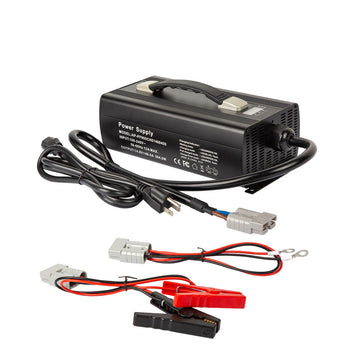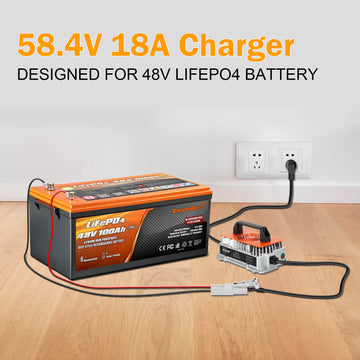How Does a Solar Inverter Work?
How Does a Solar Inverter Work?
With the rapidly increased interest in renewable energy sources across the globe, the interest in solar systems has also shot up at amazing rates. The ability of the sun to power an entire home is a huge advantage for environmental protection (think of all the electricity saved!) and is also a great use of a resource.
Solar power uses sunlight to produce safe and stable electricity. If photovoltaic panels work alone that can not convert the kinetic energy from the sun into usable power, this is the job of an inverter.
In a domestic solar energy system, an inverter is a briefcase-sized box that is discreetly installed close to the solar panels. They generate direct current (DC) that, when passed through the inverter, they will be converted to alternating current (AC), this is the type of electricity required to power electronic devices. In this blog, you will learn more about how a solar inverter work.
What is Solar Power
Solar panels
Photovoltaic cells sandwiched between layers of semiconducting materials such as silicone, and encased in a polymer frame with a glass surface, this creates solar panel. But, when it comes to solar systems, do you actually know what the solar system is made up of and how it works? Solar systems consist of solar panels, (or photovoltaic (PV) panels), an inverter (super important) connecting wires and a rack to keep everything in place. They may also contain a battery and charge controller, depending on the system and an electric meter, and the amount and type of panels for each system will depend on the energy output needed.

Solar panels should be installed at the ideal angle to capture as much sunlight as possible.
Photons in sunlight energize the different electronic properties of the layer, creating an electronic field. It is called the photoelectric effect and produces the required current to generate electricity.
For this power to be usable, it must first pass through the solar inverter. The current enters as DC and leaves as AC, to use in the home or business devices, or deliver to the electricity grid.
What is a solar inverter?
The solar inverter is one of the most crucial parts of a solar power system. Solar inverters convert the energy output from solar panels into a usable electricity form, this is to be utilized in your home or workplace.
How Does a Solar Inverter Work?
Residential solar inverter
Solar inverters are using a system of semi-conductors called IGBT – Insulated Gate Bipolar Transistors. They are solid-state devices, that, when they are connected in the form of an H-Bridge, oscillate, converting DC to AC power. In other words, solar inverters work by taking in the variable direct current, or DC output, from your solar panels and transforming it into alternating 120V or 240V currents, or AC output. Appliances in your home are running on AC, not DC, which is why the solar inverter must change the DC output that is collected by your solar panels.
To be a little more technical, the sun shines down on the solar panel (or photovoltaic (PV) cells), which is made of semiconductor layers of crystalline silicon or gallium arsenide. These layers are a combination of positive and negative layers, which are connected by a junction. When the sun shines, the semiconductor layers absorb the light and deliver the energy to the PV cell. This energy runs around and bumps electrons lose, and they move between the positive and negative layers, creating an electric current known as direct current (DC). Once this energy is generated, it is either stored in the battery for later use or delivered directly to an inverter (this depends on the type of system you have).
Additional transformers enable power to be transmitted to and from the grid.
If your solar arrays generate more power than your household requires, any excess funnels to the grid. Conversely, if your solar system doesn't generate enough power, it can be topped up from the grid. You can enjoy an uninterrupted consistent supply that comes from the grid all night.
Solar System Energy Production
When the solar energy gets delivered to the inverter, it is in DC format but your home requires AC electricity. The inverter grabs the solar energy and runs it through a transformer, which then spits out an AC output. Essentially, the inverter tricks the transformer into thinking that the DC is actually AC by forcing the transformer to act in a way like AC – the inverter runs the DC through two or more transistors that turn on and off at super-fast speeds and power two varying sides of the transformer.

Types of Solar Inverter
There are six main types of inverters available, string inverters, string-optimized inverters, micro-inverters, battery inverters, central inverters, and hybrid inverters.
They are all performing the same task, converting DC to AC, but their efficiency and price tag vary.
1. String Inverters
Inverters usually have one or two inputs, known as MPPT, Maximum Power Point Tracker.
Each line of solar panels connects via an independent string before joining the MPPT. The power runs through the strings continuously from the PV modules.
The output of the entire chain will be disrupted if any individual panel is affected by shade or bird droppings.
To illustrate: Imagine you are stepping on a hosepipe, water flow won't only stop in the area you tread, but flow along the entire pipe is affected.
String inverter systems are efficient but not recommended in areas that are often shaded by trees, power cables, etc.
String inverters are the most common inverter option for residential use, and there is usually one string inverter per solar installation. So they are called string inverters because a string of solar panels is connected to inverters.

2. String Optimized Inverters
The optimized inverter works in a similar way to string inverters. However, each panel has a very small optimizer on the back.
It makes the panels electrically independent of each other, therefore, if one unit fails, the efficiency of the rest of the system is not interrupted.
Solar Edge optimized inverters provide an almost unparalleled monitoring system, ensuring owners are fully-aware aware of its productivity and consumption at all times.
3. Micro-Inverters
As the name suggests, micro-inverters are small devices that are affixed to the back of every individual solar panel. The direct current (DC) is converted at the solar panel, resulting in significantly higher output. Although the most expensive option, micro-inverters typically generate up to 15% more power than string systems.
Micro-inverters can optimize each solar panel individually, which offers more energy, especially in shady conditions.
They have no moving parts but they are filled with polymers, this is making them dense and durable. Their life expectancy is 20+ years, they will last for as long as your solar panel provides maximum output.
Micro-inverters are premium systems that provide superior monitoring quality. Owners have the option of monitoring the system in its entirety or each panel individually if they want to remain on top of their electricity production or consumption statistics.
4. Battery Inverters
Battery inverters are the best option if you need to retrospectively fit a battery into your solar system, or want to keep your battery separate from solar panels and run through a different inverter. A battery inverter converts your battery power into AC and supplies it to your switchboard (instead of grid power) wherever possible.
5. Central Inverters
Central inverters are huge and generally are used for systems that require hundreds of kilowatts (or even sometimes megawatts) of volume. They are not for residential use and resemble a large metal cabinet, with each cabinet being able to handle around 500kW of power. They are typically used commercially for large-scale installations or utility-scale solar farms.
6. Hybrid Inverters
Hybrid inverters, otherwise known as multi-mode inverters, allow you to connect batteries to the solar system. It engages with the connected battery through DC coupling (when both the solar and the battery use one inverter and the DC from the solar panel charge the battery through a DC charger) and its electronics organize the charging and discharging of the battery.

The Difference Between DC and AC Current
Solar inverter process
All commercial electronic and large household appliances use AC power, Alternating Current.
It is the job of the solar inverter to convert direct current power harvested from sunlight into alternating current electricity.
DC – Direct Current
The current flows in one direction are direct current (DC) and are the type of power supplied by solar cells and batteries.
For example:
A flashlight contains a continuous electrical loop called an electrical circuit that connects the amplifier, battery, and switch. Electrical energy is systematically delivered from the bulb to the battery until its energy runs out.
This is a typical example of an electronic device that uses DC; mobile phones and laptops are others.
The direct current shows as a straight line on the oscilloscope screen.
AC – Alternating Current
The current that constantly changes direction is alternating current (AC) and is the type of power source used by all commercial and domestic appliances.
It has a frequency of 50-60Hz (Hertz), which is equal to the number of times the current switches direction per second.
For example:
A cable leading from an outlet to lights is packed with electrons – you might be wondering how they ever power the bulb if they're forever changing direction.
When the power is switched on, each electron vibrates back and forth rapidly, converting electrical energy into heat energy. This operation causes the filament to heat up, and the bulb to glow.
Unlike direct current, the electrons don't need to transfer energy in a continuous circuit instead, they perform by jumping up and down in the same spot.

What is an MPPT?
The Maximum Power Point Tracker is the input channel found on the string inverter. Its purpose is to maximize the available kinetic energy from solar panel string during use.
Inverters without MPPT suffer when the sunlight and cell temperature conditions are not optimal, thereby affecting the amount of energy harvested.
The MPPT closely monitors current and voltage, pushing the inverter to operate at its highest level at all times, therefore increasing the energy yields.
Single and dual MPPT inverters are available; the latter offers better system design flexibility and greater energy harvest.
Most systems require only one inverter; big industrial systems employ several.
For optimum performance, match the inverter's maximum output watts to the expected output of the array.
What makes a good solar inverter?
When you are considering the numerous different inverter brands, types, and sizes, there are a few things you can keep an eye out for when it comes to good solar inverters. These include :

Is the solar inverter CEC approved?
The Clean Energy Regulator has a list of CEC approved inverters that is super important to review. Being CEC approved means it is suitable and approved, and is of good quality.
What size solar inverter is best?
This is a question that confused a lot of people. For the best clarification we can provide, it is best to get an inverter that can handle the maximum power that a solar power system can produce. For instance, if you need a 3kW solar power system, you will need 3kW panels and a 3kW solar inverter. Ensure your inverter’s rating in kilowatts is equal to or more than the solar panel's output.
Is the solar inverter weatherproof?
This is a key question that needs to consider when you are looking at where your inverter will be located. If it is weather-proof, this obviously offers you a little more flexibility when it comes to placement but, if it is not, you may need to consider getting a weather-proof cage for protection. That is to say, the more protected your solar inverter is, the longer it will last and the better it will perform. Check out the specifications of the solar inverters you are interested in and the place where you are planning to install the solar inverter.

The solar inverter display
Take a look at the solar inverter display and see how much information is available to be viewed directly on the inverter, or whether there is a remote monitoring option (for example, from a console in your home). Some of the information that may be contained on the display includes something below.
How many hours your system has been producing electricity?
The number of kilowatts (kW) your system is currently generating.
The amount of energy (kilowatt hours) on daily basis the system is producing
The amount of electricity (kilowatt hours) your system has generated since installation.
There are even remote options for your mobile devices or computers, so it is depending on your budget and your requirements when it comes to the display.
Ensure you read the rating of solar inverters carefully - they are rated in terms of DC input and AC output, so make sure you select a system that suits your needs.
Solar inverter warranty
Most grid-connected inverters usually last around 10-20 years, realistically, they should all last 10 years at an absolute minimum. It is depending on the inverter, warranties usually last about 5-12 years with an extension option for an extra cost. Check out the inverter you would like to purchase and its features, and weigh up the need for a longer warranty than what is offered - always remember, the longer warranty the inverter has, the more protection you have.
Conclusion
Solar inverters work by taking low-voltage, high-current signals from PV solar panels and converting them into high-voltage alternating current (AC). The best type of inverter is depending on your intended application, the size of the solar array, and your budget. We recommend opting for the best inverter that you can be afforded, it will last as long as your system, require little or no maintenance, and increase the energy yield potential from your solar array.

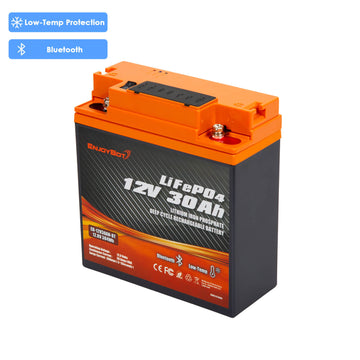




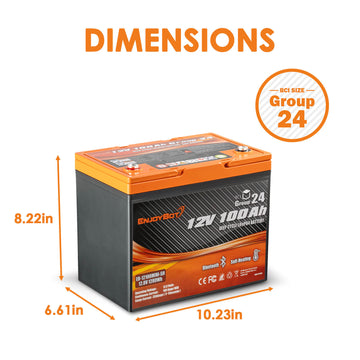



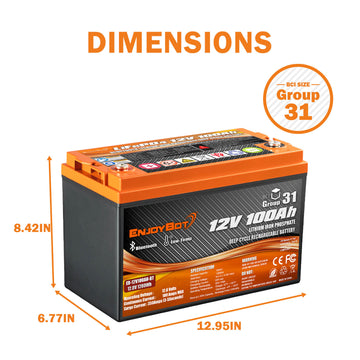









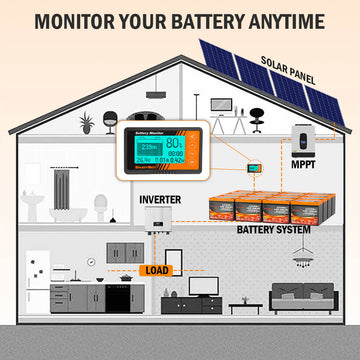
![[Upgraded Version] Enjoybot 14.6V 20A Waterproof Mountable LiFePO4 Lithium Battery Charger For 12V LiFePO4 Battery](http://enjoybotbattery.myshopify.com/cdn/shop/files/14.6V_20A_Waterproof_Battery_Charger_1_360x.jpg?v=1752565609)
![[Upgraded Version] Enjoybot 14.6V 20A Waterproof Mountable LiFePO4 Lithium Battery Charger For 12V LiFePO4 Battery](http://enjoybotbattery.myshopify.com/cdn/shop/files/14.6V_20A_Waterproof_Battery_Charger_2_360x.jpg?v=1752637374)
